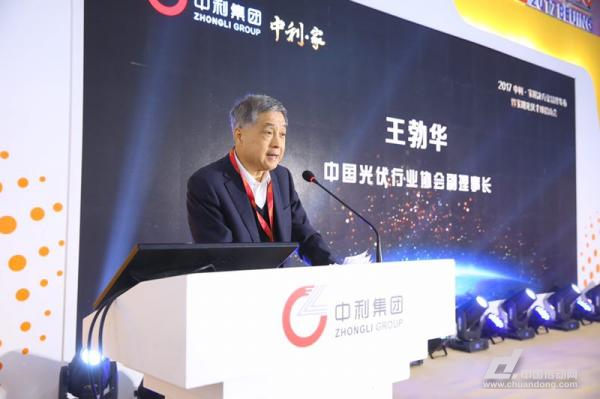The total amount of PV subsidy has exceeded 1.6 trillion and the installed capacity in 2018 is reduced by 40%.
China’s Photovoltaic Industry Association Wang Bohua recently expressed embarrassment in several forums and sometimes directly expressed his concern at the current mad expansion of manufacturing industry. No one hopes that the three major PV giants in China will fall back to two situations.

It is impossible to understand the current supportive basis for the frenzied expansion of the photovoltaic manufacturing industry. It is unbelievable if the sustainable growth of the photovoltaic industry has only been formed on the basis of the high installed capacity in 2017.
Basic view: China's high PV installation in 2017 will not only be a difficult breakthrough point in China, or in the world, or may be a number of years in the future, even if the component prices continue to decline, power generation efficiency continues to increase, including into the era of parity Internet access.
Photovoltaic Subsidy
China will need PV subsidies in the next few years. Although there is not yet any authoritative department in the country to disclose the number of PV subsidies that have already occurred in China, it is clear from the number of open installations and the foreseeable basic new installed capacity that a value can be set.
(1) 70G put into operation before 2017, an average of 1250 hours of utilization hours, a comprehensive subsidy of 0.45 yuan, 39.275 billion yuan per year, and 787.5 billion yuan in 20 years.
(2) Production of 50G in 2017, an average of 1200 hours, a subsidy of 0.4 yuan, an annual increase of 24 billion yuan, and a 480 billion yuan in 20 years.
(3) 2018 subsidies 30G (estimate), the average annual use of 1200 hours, the average electricity subsidies of 0.25 yuan, an annual increase of 9 billion, 18 billion 180 billion.
(4) The subsidy of 30G (estimated) in 2019, the annual average of 1200 hours, and average subsidies for electric power of 0.15 yuan, the annual increase of 5.4 billion yuan, and the 20 years of 1080 billion yuan.
The four countries that add PV power plants need annual national subsidies of 79.975 billion yuan, a total of 159.15 billion yuan in subsidies for 20 years, and some subsidies for households in 2020. The total amount will easily exceed 1.6 trillion yuan.
In the {statement}, the measurement data or deviations in the range of 5–10% do not constitute any basis for decision making. Please cite caution (Yin Cunqi).
Installed in 2018 or 40% lower than 2017
The above calculations, 2018 and 2019 annual installed capacity of 30G, a 40% year-on-year decline in 2017, which compared with China's PV manufacturing industry in 2018 to form 90G capacity, not only can not meet the appetite, and even the problem of plug teeth.
Another set of data is for reference: China's wind power installed capacity exceeds 100 million yuan, annual basic subsidies exceed 60 billion yuan (see photovoltaic calculation method), and it is increasing, and it can reach 800 billion yuan in the next two years, with the same amount of photovoltaic; China's annual income can be About 50 billion yuan of new energy subsidy funds will be allocated (the total electricity consumption will be deducted from part of the policy exemption). If the electricity price is simply added, the industrial and residential electricity consumption will increase by more than 2 cents per kilowatt hour before it can be basically balanced.
In 2017, in order to reduce the burden on enterprises, and as one of the major measures, the State Council just announced that the industrial and commercial and residents have reduced the cost of each piece of electricity for a long time. In 2018, the State Council has to pass a 2 cents per kilowatt hour policy. It is estimated that the State Council does not The department dared to submit a report to the State Council; in another aspect, as a coal-fired power plant with more than half of China's power supply, the industry suffered a large area loss due to the continuous high coal price, and added 2 cents per unit of electricity or leveling, according to the National Development and Reform Commission Coal The policy of electricity linkage mechanism can increase the price of electricity, and the new energy fund whose income is increased by user demand in 2018 will exceed 4 points per kilowatt hour.
The above factors, considerations from the state's broader market, and regulations for the strict management of photovoltaic indices by the National Bureau of Energy in the near future, the average 30G or the upper limit for the next three years, perhaps, and a better situation and breakthroughs in the siege solution, are all based on the following preconditions: Even if conservative estimates 2018, 2019 use subsidies every year to put into production 30G photovoltaic installations, the total amount of state subsidies has exceeded 1.6 trillion, although the motherland is powerful and can be replaced by time.
Desktop Phone Holder,Desktop Mobile Phone Holder,Adjustable Desktop Phone Holder,Universal Desktop Cell Phone Holder
Ningbo Luke Automotive Supplies Ltd. , https://www.car-phone-holder.com